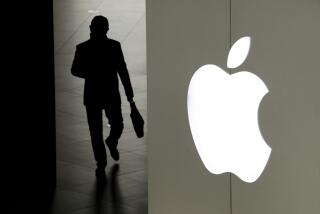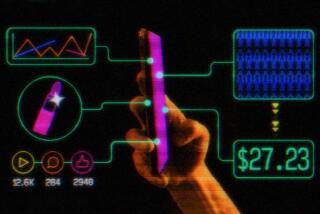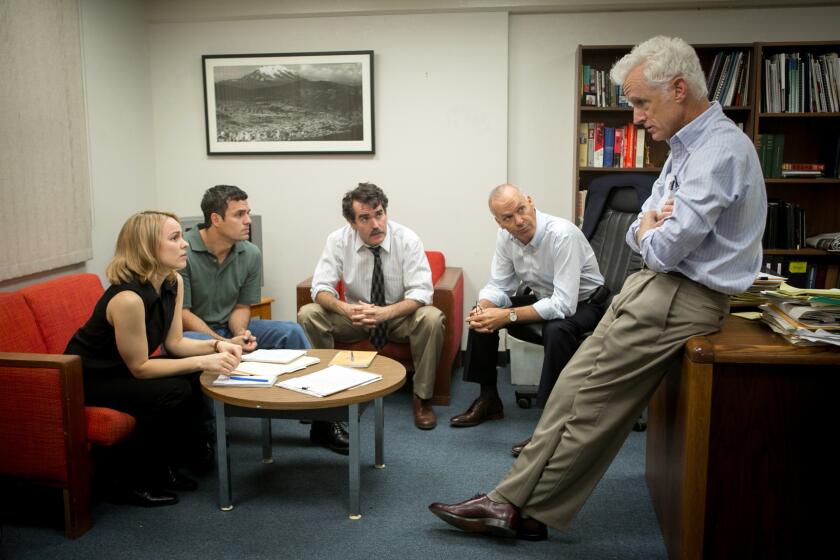Businesses quickly adopting augmented reality apps for consumers
You point your smartphone at an Italian restaurant, and diner reviews of its lasagna pop up on-screen.
Or you aim your tablet computer’s camera down a residential street, and over images of the houses you see which ones are for sale — along with the asking price, number of baths and square footage.
Haven’t done this yet? You probably will soon.
The technology is called augmented reality, or AR, and businesses are racing to incorporate it in as many consumer applications as they can. It’s essentially the same technology TV sportscasts use to digitally paint a first-down line on a football field, adapted and updated for camera-equipped smartphones and tablet computers.
“In the future, you’ll be able to point your device at anything around you and, without prompting, that device will recognize what is there, incorporate your interests, and layer on information about what you’re looking at,” said Brian Blau, research director at Gartner Inc. “Point a phone at a building, you’ll see the history, for example. Or at a flower, the kind of flower comes up.”
AR has been around for years, but only recently gained traction for consumers with the widespread adoption of smartphones equipped with electronic compasses and GPS chips to determine where the devices are and what they’re pointing at. The mingling of the real and virtual worlds works by overlaying what can be seen in plain sight with digital photos, videos or text. It’s similar to the sophisticated bar codes known as QRs, but has a much wider range of applications. A QR requires a digitally created image, or code, printed on an advertisement or product.
With AR technology, a consumer simply points at an object to get information. Aim at a house, for example, and find out whether the resident is selling anything on eBay Classifieds. Or point to an apartment building, and find out whether there are vacancies and what the landlord wants for rent.
About 6 million AR apps were downloaded last year, according to ABI Research — still a small fraction of the overall app market. But the number is projected to increase to 19 million downloads this year and balloon to nearly a billion by 2016.
The firm forecasts the mobile AR industry will see $3 billion in global revenue by 2016, up from $87 million this year and $21 million in 2010.
One of the pioneers in mobile AR was Yelp, the popular site that features consumer reviews on restaurants and other businesses. Point a phone using the site’s free app down a street, and text bubbles pop up on the screen to identify which establishments have been reviewed.
Click on a bubble, and the business’ Yelp page appears.
In the last year, there’s been a boom in companies tinkering with AR, said Windsor Holden, an analyst at Juniper Research. “A number of big brands, especially, have become interested.”
Many of the apps benefit specific companies (or industries) and are free to download. Beer-maker Stella Artois has an AR app to help customers find bars serving its brews. Shoppers can try out furniture from Ikea and Pier 1 Imports, virtually, by pointing to a spot at home and adding pieces on the SnapShop Showroom app.
House hunters can download Emeryville-based ZipRealty’s free app, go to a neighborhood they like and point their phone down the block. Text bubbles pop up on-screen, showing the addresses and distances of homes for sale nearby. Tapping on a bubble will bring up the list price, thumbnail photo, square footage and the number of days it’s been on the market. The app has been downloaded about 350,000 times, ZipRealty said.
Rofo.com, a San Francisco real estate site, has listed all of its rental properties on a similar app.
“Someone can be walking along and hold their phone up to a particular building or down a city block to see if anything is available,” said Rofo Chief Executive Alan Bernier. “Or you could be sitting in the office, point the phone outside the window and see the same results.”
Others have found ways to charge. Conde Nast Digital Britain, for example, has AR-enhanced guidebook apps for New York, Rome, Paris and Barcelona, Spain. Priced at $5.99 each, the apps enable tourists to point their phones toward a section of the city and get a rundown of museums, shops, restaurants and other attractions in the vicinity.
The Word Lens app, at $9.99, enables users to point a smartphone at a Spanish-language street sign, menu or other text, and receive an instant English translation. Several transit apps for sale point to the nearest subway stop via arrows overlaid into the sky or sidewalk.
AR apps are also used by nonprofits for educational purposes.
One of the most innovative uses of mobile AR comes from the Museum of London, which rolled out its Streetmuseum app last year. In more than 200 London street locations, users can view historic photos and paintings.
Overlaid images include a photo of a building taken as it was collapsing after a World War II air raid. There’s also, in front of Buckingham Palace, the arrest of a suffragette agitating for women’s right to vote in 1914. And in Hyde Park, longhaired students at a music festival during the 1970s.
Paintings of the Great Fire of 1666 are also superimposed on present day scenes.
“We tried to pick really beautiful, interesting images that were a bit unexpected from all over London so visitors could see what the city was like through the ages,” said museum marketing manager Vicky Lee.
Aside from smartphones and tablets, AR applications are finding their way into stores, gaming consoles and autos.
Lego worked with Intel to install bright yellow AR kiosks in its 74 stores worldwide. Shoppers can see 3-D virtual renderings of what a completed model looks like by holding and rotating a box in front of the machine.
Last year, Macy’s tested an AR dressing room at its flagship store in New York. Instead of trying on clothes, shoppers stood in front of a digital mirror that fit clothes — virtually — onto their body.
Gamers on the portable Nintendo 3DS console can battle fire-breathing dragons or shoot arrows at targets that appear to sprout out of any surface using AR.
Automakers are looking to AR to add safety or navigational data for drivers. General Motors, for example, is researching augmented windshields that highlight street signs and outline the edges of roads during heavy fog or rain.
The next step, technology companies say, is creating AR apps that can recognize 3-D objects, such as a building, a chair or a statue. Eventually, phones and tablets will be smart enough to differentiate the Golden Gate Bridge from the Brooklyn Bridge even with the GPS chip switched off.
Enthusiasts believe AR eventually could have sweeping influence on the way people get information about their surroundings and one another.
“It’s going to transform areas like online search, mobile marketing, social networking and retail,” said Mark Beccue, a senior analyst at ABI. “The possibilities are huge.”







